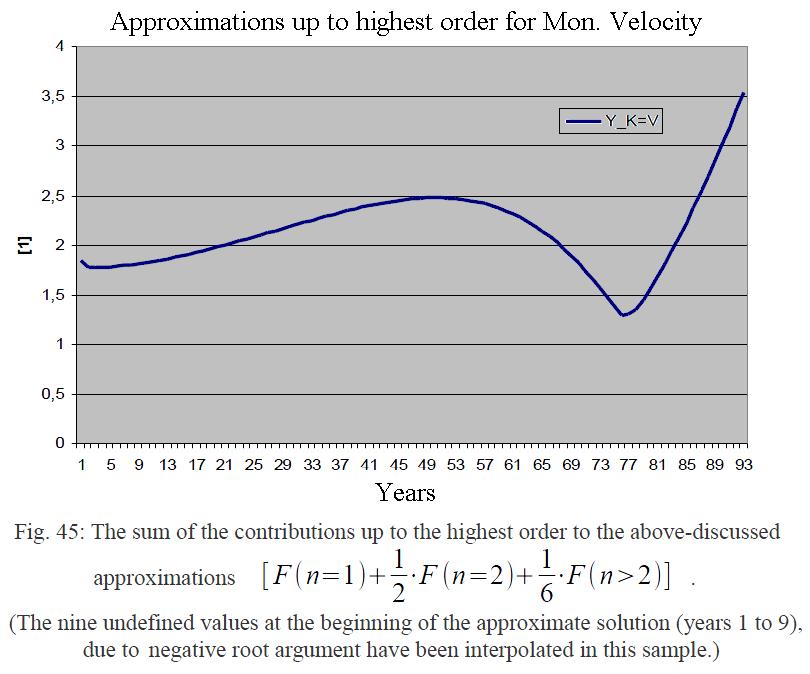46 Higher Orders of the Tangent
With L=0, of course, are
their powers back to zero, so that higher-order![]() effects
with
effects
with
![]()
![]()
![]()

![]()
![]() (46.1)
(46.1)
or as
![]()
![]()
![]() (46.2)
(46.2)
one can write to investigate. In particular, results from the last equation the fact that, because at least one of the factors must be zero, and then the ancillary claims
![]() (46.3)
(46.3)
or ![]() (44.4)
(44.4)
are justifiable. The first equation is nothing
more than our original equation, the second however,
can be exploited further. The latter but is not resolved after![]() elementary. For n=1,
although there is a fairly complicated basic solution
elementary. For n=1,
although there is a fairly complicated basic solution
![]() (46.4)
(46.4)
with abbreviations:
![]()
![]()
![]()
![]() (46.5)
(46.5)
which is, however, of little benefit. The
interesting solutions up from n=2, on the other hand can not be solved
elemental. But one can make an approximation for the inner region of the
solution, as we know that's![]() in normal times. Thus
one can justify for
in normal times. Thus
one can justify for![]() the need of an
approximation:
the need of an
approximation:
![]() (46.6)
(46.6)
which results in the two approximate solutions:
![]() (46.7)
(46.7)
Using the abbreviation of the capital
coefficient as![]() this gives
this gives
![]() (46.8)
(46.8)
wherein the first of the higher orders is given by n=2:
![]() (46.9)
(46.9)

The higher orders, we can summarize for any linear combination of solutions, in analogy to the Taylor series
![]() (46.10)
(46.10)
and because
![]()
![]() (46.11)
(46.11)
results for large![]() , a further approximation:
, a further approximation:

![]() (46.12)
(46.12)
The second factor is now adjusted for![]() , and therefore
we can isolate the total faculty. Because of the known exponential series
representation
, and therefore
we can isolate the total faculty. Because of the known exponential series
representation![]() the sum total of
the rest can be approximated87 to
the sum total of
the rest can be approximated87 to
![]() (46.13)
(46.13)
The four approximations (+, +), (-, -), (+, -),
(-, +) can be used to estimate higher order effects on the average value of![]() , wherein the (+,
+) solutions results are shown in the curve below:
, wherein the (+,
+) solutions results are shown in the curve below:
